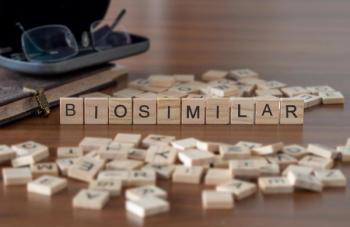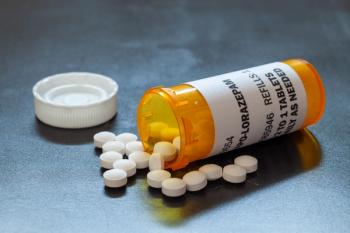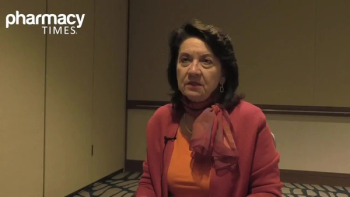
Data Show Effect of Dietary Sodium Reduction on Blood Pressure Was Comparable to First-Line Medication
Clinically meaningful lowering of blood pressure through reduction in dietary sodium was achieved safely and rapidly in 1 week in a middle-aged and elderly cohort.
Dietary sodium is a major contributor to blood pressure, explained Deepak Gupta, MD, MSc, non-invasive cardiologist and assistant professor of medicine in the Division of Cardiovascular Medicine at Vanderbilt University Medical Center in Nashville, Tennessee, during a session at the American Heart Association (AHA) Scientific Sessions 2023 in Philadelphia, Pennsylvania. On average, individuals in the United States consume approximately 3500 mg of sodium per day, which is far in excess of the AHA, World Health Organization, and Department of Health and Human Services recommendations of 1500 to 2300 milligrams per day, according to Gupta.
“The population impact of excess dietary sodium is profound,” Gupta said during the session. “It's been estimated to contribute to 1.9 million deaths annually worldwide based on 2019 data. Projections are that reducing [dietary sodium] from the current 3500 mg a day down to the recommendation of 2300 mg per day would reduce deaths in the United States by 44,000 to 92,000 alone, and save somewhere between $12 billion and $20 billion per year.”
Hypertension, or high blood pressure, is the most common worldwide chronic disease condition, with more than 1.3 billion individuals affected. According to Gupta, hypertension is a major risk factor for heart, brain, and kidney disease, and it is a contributor to 1 in 8 deaths worldwide.
The DASH-Sodium trial (NCT00000608) was conducted approximately 20 years ago and tested a hypothesis investigating whether sodium is related to blood pressure. The study investigators used a typical Western diet of 3300 mg per day, and then reduced sodium down to 1500 mg per day and saw a reduction in systolic blood pressure of 6 to 7 mmHg.
“In the 20 years since the DASH-Sodium trial, consumption of sodium has remained at 3500 mg per day,” Gupta said. “Part of the reason for that is that there's substantial interindividual variability in the blood pressure response to higher and lower sodium consumption.”
Furthermore, the DASH-Sodium trial excluded individuals taking blood pressure medications and patients with diabetes, which leaves some unanswered questions, according to Gupta. He noted that the primary questions are whether dietary sodium reduction would lower blood pressure among individuals already taking medications for hypertension, as well as the extent to which this may be possible in individuals with diabetes.
“Additionally, we wanted to know in a contemporary population, what proportion of individuals experienced lowering of blood pressure with dietary sodium reduction,” Gupta said. “To address these questions, we conducted our study between 2021 and 2023 from 2 sites. Vanderbilt, where I'm at, is the coordinating center, and then individuals were enrolled through the CARDIA study, which is sponsored by the [National Heart, Lung, and Blood Institute] at 2 field centers, one in Chicago, Illinois, and the other at Birmingham, Alabama. [The centers were] affiliated with Northwestern University and [University of Alabama at Birmingham (UAB)], respectively.”
The investigators enrolled a middle-aged and elderly cohort aged 50 to 75 years, excluding individuals that had a systolic blood pressure outside of 90 to 160 mmHg or diastolic blood pressure outside of 50 to 100 mmHg, as well as excluding those with resistant hypertension or those who had contraindications to the diets.
“After enrollment, individuals came back for a baseline visit on their usual diet,” Gupta said.
“This is their own diet, [which] was not standardized by us. This is to reflect their true usual individual diet.”
Participants were then randomly assigned to either a high sodium diet first or a low sodium diet. Then at the end of that first diet week, participants crossed over to the opposite diet.
“The high sodium diet was pragmatically created, where we allowed people to consume their own typical diet. Then we supplemented that with 2200 mg of sodium added by salt bouillon packets,” Gupta said. “The low sodium diet, in contrast, was standardized and created in metabolic kitchens at Northwestern in Chicago and at UAB. That diet was all designed to provide an average of 500 mg of sodium per day, per individual, and those [meals] were all available commercially through grocery stores or online retailers, adding to the practicality of implementation.”
During the trial, 213 individuals completed both the low and high sodium diets. These individuals had a median age of 61 years, approximately two-thirds of whom were female and approximately two-thirds of whom self-identified as Black. The median body mass index (BMI) was 31.
“We had a spectrum of individuals across normal blood pressure controlled hypertension, untreated and uncontrolled hypertension, and 21% had diabetes,” Gupta said. “Their usual diet was already very high in sodium at around 4.5 grams per day, and the median systolic blood pressure at that [sodium intake] was 125 mmHg.”
When participants were on the high sodium diet, Gupta explained that the investigators raised their sodium to about 5000 mg per day. However, Gupta noted that blood pressure did not substantially change from the level observed at their usual sodium intake, which was 126 mmHg. On the low sodium diet, investigators significantly reduced sodium intake to approximately 1.3 grams per day, and blood pressure was significantly lower at a median of 180 mmHg.
“[Approximately] 10% of individuals reported any adverse events [AEs] while on the high sodium diet,” Gupta said. “In contrast, with the low sodium diet, only 8% of individuals reported any [AEs]. These were generally mild and self-limited.”
Additionally, the consistency of blood pressure lowering was also seen across all the subgroups, including age, sex, race, or a history of hypertension.
“A couple of the gaps that we were trying to address was what is the effect of antihypertensive medications, and we did not see a difference in the reduction in systolic blood pressure lowering between individuals that were on and not on antihypertensive medications,” Gupta said. “Similarly, individuals that had diabetes had a very profound reduction. But even with those individuals that did not have diabetes, we still saw a significant reduction in their systolic blood pressure.”
Overall, the low sodium diet reduced systolic blood pressure in 75% of individuals with a median reduction of 7 mmHg. According to Gupta, this is comparable in the magnitude of blood pressure effect to a first-line medication, such as hydrochlorothiazide at 12.5 mg daily.
“The usual diet for most individuals was already very high in sodium. The decline in blood pressure resulting from dietary sodium reduction was independent of hypertension status and antihypertensive medication use, and this was consistent across subgroups and did not result in excess [AEs],” Gupta said. “We think that clinically meaningful lowering of blood pressure through reduction in dietary sodium was achieved safely and rapidly in one week in the vast majority of middle-aged elderly individuals with an effect comparable to commonly utilized medications.”
Reference
Gupta D. AHA Scientific Sessions 2023 Late-Breaking Science. Presented at: AHA Scientific Sessions 2023; November 11, 2023.
Newsletter
Stay informed on drug updates, treatment guidelines, and pharmacy practice trends—subscribe to Pharmacy Times for weekly clinical insights.




















































































































































































































